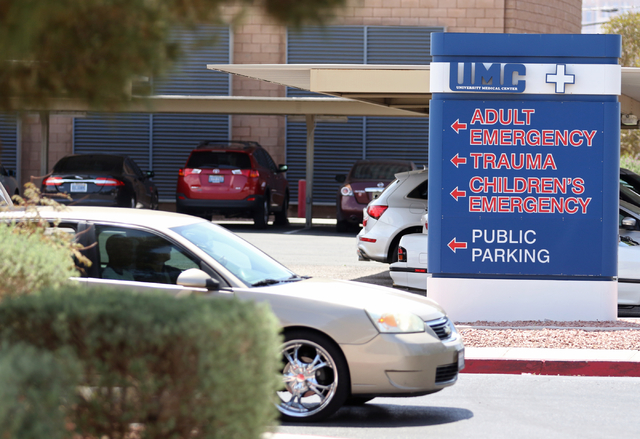UMC does financial about-face

In 2002 University Medical Center lost more than $20 million — a year later it was losing money at a rate of more than $2 million per month.
By 2011 it had posted three straight years of operating losses exceeding $70 million annually and Clark County Commissioner Steve Sisolak — tired of the county ponying up subsidies as high as $100 million a year for the hospital— said it was possible UMC would have to close.
Three years later the public hospital not only had to borrow $45 million in emergency loans from Clark County just to make payroll, it also saw three different CEOs try to stop the financial hemorrhaging.
So chances are better than good that if someone told you today that the taxpayer-supported medical center is operating in the black you’d be far more than a tad skeptical.
But it’s true. I’ve seen UMC’s numbers. From July 2015 through April 2016, the income from operations revenue, less expenses, is more than $32 million. During the same time frame last year, the hospital ran a $35 million loss.
At the end of the fiscal year on June 30, UMC CEO Mason VanHouweling — who took over the top leadership spot at the end of 2014 — projects the hospital will be $35 million in the black.
While VanHouweling has led the turnaround — Sisolak said he’s “clearly effective” at finding ways to increase revenue — the 46-year-old CEO talks more about “team effort” than Steve Kerr, the coach of the Golden State Warriors.
“It’s been a team effort,” he says. “Without a team effort of the governing board, insurance providers, physicians, employees and our entire staff, it wouldn’t have happened. A team effort has been the key.”
OK, so there’s no “I” in “team,” but how did the team turn a loser into a winner?
The reasons appear clear:
Insurance providers increased the rate of reimbursement for procedures at UMC to that of other hospitals; patients covered by the Affordable Care Act dropped uncompensated care from 40 percent to 11 percent: hospital occupancy rose from 78 percent to 90 percent; a few hundred positions and some services, including some Quick Cares, were eliminated; heart procedures jumped from 130 to 200; there was a 28 percent increase in kidney transplants, a record 78, and surgical volumes increased from nine starts to more than 18 daily.
VanHouweling, John O’Reilly, governing board chairman, and Sisolak say increased reimbursement rates by insurance providers is critical. They changed, VanHouweling said, after providers realized the hospital had to lay off staff and cut services. UMC provides trauma, burn care, transplants and other services not found at other hospitals.
Lower reimbursement rates, VanHouweling said, were partially caused by high levels of uninsured patients. Both VanHouweling and O’Reilly said the presence on the governing board of Eileen Raney, who consulted for health care organizations for 40 years, was instrumental in negotiations with insurance providers.
Doctors, including cardiovascular surgeon Quynh Feikes, said more physicians are now using the hospital — increasing occupancy and surgical volumes — because the administration asks for their input on issues that include new technology.
“They’re actually reaching out,” she said. VanHouwling stresses the projected $35 million income derived from services this year will go to necessary capital improvements. So will the $31 million the county commission thought would be needed to cover operating expenses.
Those improvements will be necessary, the CEO said, now that UMC has been designated as the primary teaching site for the new UNLV medical school.
Sisolak, who had nearly given up UMC for dead, couldn’t be happier.
“UMC had been on life support,” he said, “but now I’m happy to say the patient is in a very full recovery.”
Paul Harasim’s column runs Sunday, Tuesday and Friday in the Nevada section and Thursday in the Life section. Contact him at pharasim@reviewjournal.com or 702-387-5273. Follow @paulharasim on Twitter.